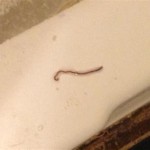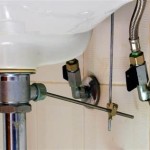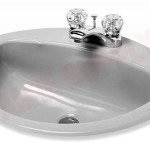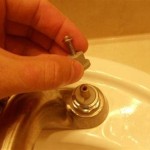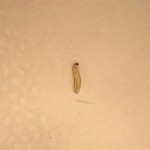Camper Bathroom Sink Won't Drain Water: Troubleshooting and Solutions
A clogged bathroom sink in a camper can be a significant inconvenience, disrupting daily routines and potentially leading to unsanitary conditions. Addressing this issue promptly and effectively prevents further complications and ensures the continued functionality of your camper’s plumbing system. Investigating the cause and implementing appropriate solutions are crucial steps in restoring proper drainage. This article outlines common causes of blocked camper bathroom sinks and provides a systematic guide to troubleshooting and resolving these plumbing problems.
Identifying Common Causes of a Blocked Camper Bathroom Sink
Several factors can contribute to a blocked bathroom sink in a camper. Understanding these potential causes is the first step in pinpointing the source of the problem and selecting the appropriate solution.
Hair and Soap Buildup: Similar to residential sinks, hair and soap residue are frequent culprits. Over time, these materials accumulate within the drainpipe, forming a dense blockage that restricts water flow. The limited space within camper plumbing systems can exacerbate this issue, making them more prone to clogs.
Grease and Food Particles: While camper bathroom sinks are primarily used for personal hygiene, grease and small food particles can inadvertently enter the drain, especially if the sink is also used for rinsing dishes or utensils. These substances solidify within the drainpipe, creating a sticky residue that traps other debris and contributes to the formation of a clog.
Foreign Objects: Small items like toothpaste caps, dental floss, or jewelry can accidentally fall into the drain and obstruct water flow. These objects may become lodged in the drainpipe, causing an immediate and noticeable blockage. The tight confines of camper sinks make it easier for small items to be accidentally dropped and lost.
Mineral Deposits: In areas with hard water, mineral deposits can accumulate within the drainpipe over time. These deposits, primarily composed of calcium and magnesium, gradually narrow the diameter of the pipe, restricting water flow and eventually causing a complete blockage.
Ventilation Issues: A properly functioning plumbing vent system is crucial for maintaining adequate drainage. The vent allows air to enter the drainpipe, preventing a vacuum from forming that can impede water flow. If the vent is blocked by debris or damaged, the sink may drain slowly or not at all.
Holding Tank Issues: While less common, problems with the camper's grey water holding tank can occasionally affect sink drainage. A full or improperly functioning holding tank can create backpressure in the drain lines, hindering the flow of water from the sink. This is especially true if the tank's vent is also blocked.
Step-by-Step Troubleshooting Guide
Once potential causes have been identified, a systematic troubleshooting approach is essential. This involves a series of steps to isolate the problem and determine the most effective solution.
Visual Inspection: Begin by visually inspecting the sink drain and surrounding area. Check for any obvious obstructions, such as hair or debris, around the drain opening. Also, examine the drain stopper to ensure it is not impeding water flow. A simple visual inspection can often reveal the cause of the blockage and allow for immediate removal of the obstruction.
Check the Drain Stopper: The drain stopper mechanism can sometimes malfunction and prevent water from draining properly. Ensure the stopper is fully open and not partially closed. If the stopper is adjustable, try repositioning it to allow for maximum water flow. In some cases, removing the stopper entirely can resolve the drainage issue.
Plunger Method: A plunger is a useful tool for dislodging minor clogs. Ensure there is enough water in the sink to cover the cup of the plunger. Create a tight seal around the drain opening and use a firm, up-and-down motion to create pressure and suction. Repeat this process several times. If the water begins to drain, continue plunging until the drain is completely clear.
Baking Soda and Vinegar Solution: A mixture of baking soda and vinegar can often dissolve minor clogs. Pour one cup of baking soda down the drain, followed by one cup of white vinegar. Allow the mixture to fizz for approximately 30 minutes. Then, flush the drain with hot water. This combination creates a chemical reaction that can break down grease, hair, and other debris.
Check the P-Trap: The P-trap is the curved section of pipe located under the sink. It is designed to trap debris and prevent sewer gases from entering the camper. However, the P-trap can sometimes become clogged with accumulated debris. To check the P-trap, place a bucket underneath to catch any water. Carefully loosen the slip nuts that connect the P-trap to the drainpipe. Remove the P-trap and clean out any debris. Reassemble the P-trap and tighten the slip nuts.
Utilize a Drain Snake: A drain snake, also known as a plumber's snake, is a flexible tool designed to reach further into the drainpipe and dislodge stubborn clogs. Insert the drain snake into the drain opening and gently push it through the pipe. Rotate the snake as you advance it to break up or retrieve the blockage. Once you have cleared the clog, remove the snake and flush the drain with hot water.
Inspect the Vent Pipe: As mentioned, a blocked vent pipe can prevent proper drainage. Locate the vent pipe on the roof of the camper and check for any obstructions, such as leaves, nests, or other debris. Remove any blockages to ensure proper ventilation of the plumbing system. Using a garden hose to flush water down the vent can help clear any accumulated material within the pipe.
Check the Grey Water Tank: If other troubleshooting steps have failed, consider the possibility of a problem with the grey water holding tank. Ensure the tank is not full and that the vent for the tank is not blocked. Emptying the tank and cleaning the vent may resolve the drainage issue.
Preventative Measures to Avoid Future Clogs
Preventing clogs is always preferable to dealing with a blocked drain. Implementing preventative measures can significantly reduce the likelihood of future plumbing problems.
Use a Drain Strainer: A drain strainer is a simple and inexpensive device that fits over the drain opening to catch hair, soap scum, and other debris before they enter the drainpipe. Regularly cleaning the strainer prevents these materials from accumulating and forming a clog.
Avoid Pouring Grease Down the Drain: Never pour grease or oil down the bathroom sink drain. These substances solidify as they cool, creating a sticky residue that traps other debris and contributes to clogs. Instead, dispose of grease and oil in a sealed container and discard it in the trash.
Flush the Drain Regularly: Periodically flushing the drain with hot water can help prevent the buildup of soap scum and other debris. Hot water helps dissolve these materials, preventing them from solidifying and forming a clog. A monthly flush is generally sufficient to maintain clear drainage.
Use Enzyme-Based Drain Cleaners: Enzyme-based drain cleaners are a safer alternative to harsh chemical drain cleaners. These cleaners contain enzymes that break down organic matter, such as hair and soap scum, without damaging the drainpipes. Follow the instructions on the product label for proper usage.
Regular Plumbing Maintenance: Schedule regular plumbing maintenance checks to identify and address potential problems before they escalate. This may involve inspecting drainpipes, checking the P-trap, and cleaning the vent pipe. Regular maintenance ensures the plumbing system is functioning properly and prevents costly repairs down the road.
Be Mindful of What Goes Down the Drain: Educate all camper occupants about the importance of being mindful of what goes down the drain. Avoid flushing anything other than water and approved drain cleaners. This includes avoiding the disposal of food scraps, dental floss, and other items that can contribute to clogs.
By understanding the potential causes of a blocked camper bathroom sink, implementing a systematic troubleshooting approach, and adopting preventative measures, individuals can effectively address drainage issues and maintain a functional plumbing system in their camper. Regular maintenance and responsible usage are key to preventing future clogs and ensuring the longevity of the camper's plumbing.

How To Squeeze More Space Out Of A Tiny Rv Bathroom Artofrv Com

Rv Toilet Water Won T Go Down Fix A That Flush

Why Is My Bathroom Basin Not Draining Living By Homeserve

Bwe 8 In Widespread Double Handle Three Holes Bathroom Faucet Water Saving With Drain Kit Brushed Nickel A 916457 N The Home Depot

Sink Won T Drain Here S The Fix

Set Of 2 Silicone Faucet Splash Catcher Absorbent Mats Dishwasher Safe For Bathroom Rv Kitchen Island And Vanity 2pcs Drain Cover Com
I Closed My Sink Drain Stopper And Now It Won T Open Again Is There Any Way That Can Repair This Without Hiring A Plumber Quora

How Do You Unclog An Rv Shower Drain 4 Easy Methods

How To Unclog A Really Clogged Rv Sink Drain Towing Home

Top 5 Ways To Get Hair Out Of Your Drains
Related Posts
